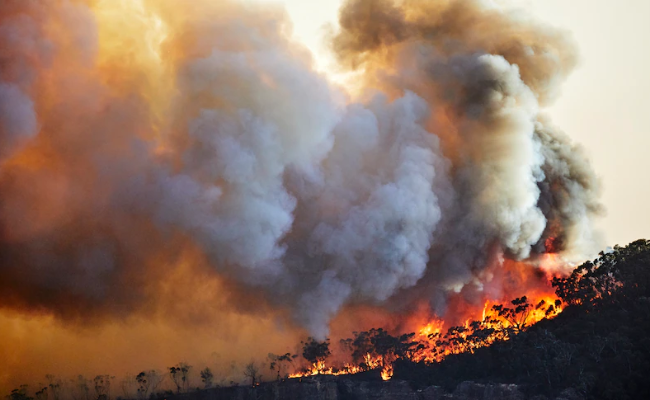Ozone layer suffers major damage due to Black Summer bushfires
The Black Summer bushfires that ravaged Australia in late 2019 and early 2020 caused widespread devastation to the country’s natural environment, wildlife and human communities.
Among the many negative impacts of bushfires was the damage to the ozone layer. It is an essential component of the Earth’s atmosphere that protects us from harmful ultraviolet radiation from the sun.
Ozone layer preservation is a remarkable accomplishment in environmental conservation. However, the increasing incidence of bushfires resulting from climate change might jeopardize progress.
Research recently published in Nature has revealed that the smoke produced by the Black Summer Bushfires of 2019-2020 caused a depletion of the ozone layer.
Bushfires during 2019-20 caused a chemical reaction that increased ozone depletion, according to a new study published in the journal Nature. https://t.co/QGwUjVnLum
— SBS News (@SBSNews) March 8, 2023
Where is the Ozone Layer
The ozone layer lies in the stratosphere. It is between 10 and 50 kilometers above the Earth’s surface.
Also, it comprises a thin layer of ozone molecules that absorbs and filters out the sun’s harmful ultraviolet (UV) radiation.
Without the ozone layer, life on Earth’s exposure to unsafe levels of UV radiation is imminent.
It can cause skin cancer, eye damage, and other health problems in humans and harm plant and animal life.
Impacts of the Black Summer Bushfires on the Ozone Layer

Photo credit: ABC News
Scientists have estimated that the Black Summer bushfires caused a 6% reduction in the ozone layer over Australia. Which is equivalent to the amount of ozone depletion in the polar regions during a typical Antarctic ozone hole season.
It is a significant and alarming amount of ozone depletion. It highlights the urgent need to lower greenhouse gas emissions and other pollutants that contribute to climate change and air pollution.
Dr. Olaf Morgenstern, a researcher at the National Institute of Water Research, New Zealand, explained.
“The Antarctic ozone hole forms because chlorine is ‘activated’ to form compounds on the surface of cloud particles that then deplete ozone.”
“This new research finds that smoke aerosol can also activate chlorine. Just like polar stratospheric clouds but at higher, more ubiquitous temperatures and away from the poles.”
“The authors, guided by atmospheric chemist Susan Solomon who in the 1980s famously explained the ozone hole–highlight a hitherto ignored mechanism of ozone depletion. And one that may become more important as more bushfires occur.”
“More research is required into the chemical properties of such complex bushfire aerosol,” he concluded.
Results of the Research
Professor Ian Rae, who previously advised the United Nations Environment Program on environmental chemicals and served as the Royal Australian Chemical Institute President, agrees with the findings. Although he is not a part of the research.
She said, “The authors of this latest paper modeled the absorption of hydrogen chloride–HCl, a combustion product–onto the partly burned organic matter in smoke particles.”
“This provides a pathway for transporting chlorinated elements to the stratosphere to release their destructive chlorine atoms. The results of the modeling agree well with the test results.”
“The nature of these chemical reactions is not nailed down, but the overall picture is likely correct.”
“Unlike how nations dealt with the CFCs, I doubt there will be another ‘Montreal Protocol’ for bushfires, which the researchers warn are likely to become more rampant under climate change that we can already see happening.”
Saving the Ozone Layer
The Black Summer bushfires caused significant damage to the ozone layer in Australia, highlighting the urgent need for action to address climate change, air pollution, and other environmental challenges.
Protecting the ozone layer is essential for the health and well-being of human and natural systems. It is crucial to address the root causes of these problems.
Creating meaningful action to protect the Earth’s environment for future generations is also vital.
For more interesting news and articles, check out Inquirer.net.

